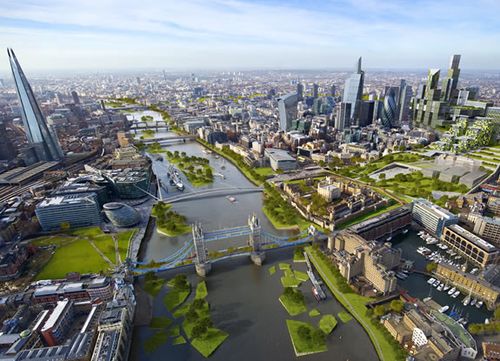
I’ve blogged a lot about the history of the City of London, but what about its future?
Right now, we could all imagine there won’t be one, but there is.
It’s just going to be different.
Now, I could speculate on the wholesale restructuring of British Banking and British bank regulations, as that’s definitely going to happen.
With RBS and Lloyds in the mire over the credit crisis, and now Barclays, HSBC and Standard Chartered in the shackles over rate fixing and money laundering, UK banking doesn’t look particularly bright.
But the City is the City.
It’s different.
I’ve heard talk of the City losing its place in global finance many times over the years, but it hasn’t happened.
Will it happen now?
I don’t think so.
As they say, liquidity doesn’t move easily, and it’s even harder to move when all the ancillary services that go with liquidity – accountancy, legal, audit, technology and more – have to move with it.
But I’ll save that debate for another day, as the reason for talking about the City in 2050 is more to do with an exhibition taking place in the centre of London right now called the Developing City.
It’s sponsored by the City of London and, as their website states:
The Developing City Exhibition will look at how the physical environment of the City - its buildings, public spaces and culture have helped it to thrive as a major business centre. The Black Death, the Great Fire, the Blitz brought pestilence and destruction, yet the City survived and rebuilt itself. Today it faces major challenges as a result of the financial meltdown, the changing nature of financial institutions and drive for more sustainable buildings. How will these factors impact on the physical fabric of the City? What will it be like to work in the Square Mile in 2050?
The Exhibition is free and runs through to 9th September, along with a few seminars and events including:
Breakfast talk
Friday 10 August, 08.30-09.30
Re-Imagining the City
During 2011-12, the London Met Diploma 5 have been studying the City of London from its Roman beginnings to its current pre-eminence. Their studies have found the City of London to be shrouded in myth, distanced from the rest of London - isolated and self-policed as any 'sink estate' but with infini...
Walk
Saturday 11 August, 14.00-15.30
City West
Covering ground between Bank Junction and St Paul's Cathedral, this walk, led by the Blue Badge Guides, illustrates the City planning authorities willingness to take architectural risks. We encounter striking visual contrast with the placement of uncompromising contemporary designs adjacent to Grade...
Breakfast talk
Friday 17 August, 08.30-09.30
What Lies Beneath
With well over 2000 years of intensive development in the City of London, new building and development projects often uncover vital discoveries about the City's past. At this free breakfast talk, archaeological experts from MOLA will present some of their most recent archaeological discoveries and dis...
Alongside this are various exhibits that explain how building and architecture changes over the next three decades to create a de-carbonised City.
This bit is particularly interesting, as it shows how work and London life changes.
A decarbonised City is one where pedestrianized streets mix retail and residential space with far more green space. Along with a far more nomadic workforce, the City of 2050 will therefore have a 50 percent increase in the workforce using 25 percent less space.
The biggest change however will be to the East of the City, where a plan is already in place to build a new financial centre with its heart in Aldgate, and then extends from there to the Tower of London and up to Broadgate.
This plan is based upon a new generation of low to zero carbon emitting buildings on a scale larger than anything ever seen before in London.

I could write a lot more about this but, as it’s free, I’ll just recommend that you go along and have a look. It’s particularly worth a look if you’re interesting in green buildings and sustainability, but also as a vision of the City of forty years from now.
Lovely.
Chris M Skinner
Chris Skinner is best known as an independent commentator on the financial markets through his blog, TheFinanser.com, as author of the bestselling book Digital Bank, and Chair of the European networking forum the Financial Services Club. He has been voted one of the most influential people in banking by The Financial Brand (as well as one of the best blogs), a FinTech Titan (Next Bank), one of the Fintech Leaders you need to follow (City AM, Deluxe and Jax Finance), as well as one of the Top 40 most influential people in financial technology by the Wall Street Journal's Financial News. To learn more click here...

